What Can A Laptop Do Without A Service Provider
Network Devices:
HUB
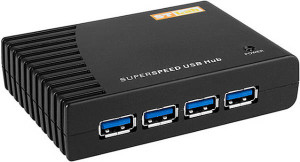
Hub is one of the bones icons of networking devices which works at physical layer and hence connect networking devices physically together. Hubs are fundamentally used in networks that usetwisted pair cabling to connect devices. They are designed to transmit the packets to the other appended devices without altering whatsoever of the transmitted packets received. They deed as pathways to direct electrical signals to travel along. They transmit the data regardless of the fact if data package is destined for the device connected or not.
Hub falls in two categories:
Active Hub: They are smarter than the passive hubs. They not only provide the path for the data signals infact they regenerate, concentrate and strengthen the signals before sending them to their destinations. Active hubs are also termed as 'repeaters'.
Passive Hub: They are more like bespeak contact for the wires to built in the physical network. They have nothing to do with modifying the signals.
Ethernet Hubs
It is a device connecting multiple Ethernet devices together and makes them perform the functions as a single unit. They vary in speed in terms of data transfer charge per unit. Ether utilizes Carrier Sense Multiple Access with Collision Detect (CSMA/CD) to command Media access. Ethernet hub communicates in one-half-duplex fashion where the chances of data standoff are inevitable at most of the times.
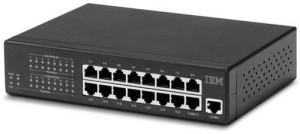
Switches
Switches are the linkage points of an Ethernet network. Just as in hub, devices in switches are connected to them through twisted pair cabling. Simply the difference shows upwards in the fashion both the devices; hub and a switch treat the information they receive. Hub works by sending the data to all the ports on the device whereas a switch transfers it merely to that port which is connected to the destination device. A switch does then by having an in-built learning of the MAC address of the devices connected to it. Since the transmission of data signals are well divers in a switch hence the network performance is consequently enhanced. Switches operate in full-duplex manner where devices tin can send and receive data from the switch at the simultaneously different in half-duplex mode. The transmission speed in switches is double than in Ethernet hub transferring a 20Mbps connection into 30Mbps and a 200Mbps connexion to become 300Mbps. Functioning improvements are observed in networking with the all-encompassing usage of switches in the modern days.
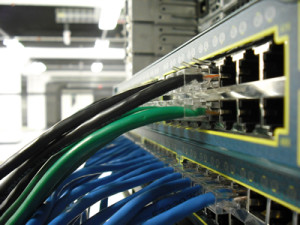
The post-obit method will elucidate further how information transmission takes place via switches:
- Cutting-through transmission: It allows the packets to be forwarded as soon as they are received. The method is prompt and quick but the possibility of mistake checking gets overlooked in such kind of packet information transmission.
- Store and forward: In this switching environment the entire packet are received and 'checked' before beingness forwarded ahead. The errors are thus eliminated earlier being propagated further. The downside of this procedure is that error checking takes relatively longer time consequently making it a bit slower in processing and delivering.
- Fragment Complimentary: In a fragment free switching environment, a greater role of the packet is examined so that the switch tin can determine whether the packet has been defenseless up in a collision. After the collision status is determined, the packet is forwarded.
Bridges
A bridge is a computer networking device that builds the connection with the other bridge networks which use the same protocol. Information technology works at the Data Link layer of the OSI Model and connects the different networks together and develops communication between them. Information technology connects two local-area networks; two concrete LANs into larger logical LAN or two segments of the same LAN that apply the same protocol.
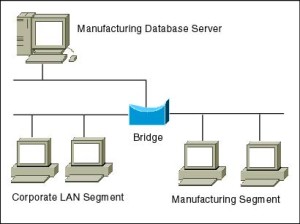
Autonomously from building upwards larger networks, bridges are also used to segment larger networks into smaller portions. The bridge does so by placing itself between the 2 portions of two physical networks and controlling the flow of the information between them. Bridges nominate to forward the data after inspecting into the MAC accost of the devices continued to every segment. The forwarding of the data is dependent on the acknowledgement of the fact that the destination address resides on some other interface. It has the chapters to block the incoming flow of information every bit well. Today Learning bridges accept been introduced that build a listing of the MAC addresses on the interface by observing the traffic on the network. This is a leap in the evolution field of manually recording of MAC addresses.
Types of Bridges :
At that place are mainly three types in which bridges tin exist characterized:
- Transparent Bridge: Equally the name signifies, it appears to exist transparent for the other devices on the network. The other devices are ignorant of its existence. It only blocks or frontward the information equally per the MAC address.
- Source Road Bridge: It derives its proper name from the fact that the path which package takes through the network is implanted inside the package. It is mainly used in Token ring networks.
- Translational Bridge: The process of conversion takes identify via Translational Bridge. It converts the information format of one networking to another. For instance Token ring to Ethernet and vice versa.
Switches superseding Bridges:
Ethernet switches are seen to be gaining trend as compared to bridges. They are succeeding on the business relationship of provision of logical divisions and segments in the networking field. Infact switches are existence referred to every bit multi-port bridges because of their advanced functionality
Routers
Routers are network layer devices and are particularly identified as Layer- 3 devices of the OSI Model. They process logical addressing information in the Network header of a package such every bit IP Addresses. Router is used to create larger circuitous networks by complex traffic routing. It has the ability to connect dissimilar LANs on the same protocol. It also has the ability to limit the period of broadcasts. A router primarily comprises of a hardware device or a system of the estimator which has more one network interface and routing software.
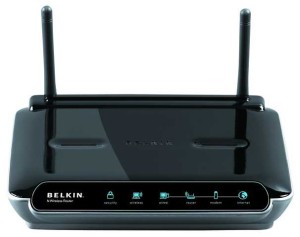
Functionality:
When a router receives the data, it determines the destination address past reading the header of the packet. Once the address is determined, it searches in its routing table to get know how to reach the destination and and so frontwards the packet to the college hop on the route. The hop could be the last destination or some other router.
Routing tables play a very pivotal function in letting the router makes a decision. Thus a routing table is ought to exist updated and complete. The two ways through which a router can receive data are:
- Static Routing: In static routing, the routing information is fed into the routing tables manually. It does non simply get a time-taking task but gets prone to errors as well. The manual updating is as well required in instance of statically configured routers when alter in the topology of the network or in the layout takes place. Thus static routing is feasible for tinniest environments with minimum of i or 2 routers.
- Dynamic Routing: For larger surround dynamic routing proves to be the practical solution. The process involves use of peculiar routing protocols to hold communication. The purpose of these protocols is to enable the other routers to transfer information nearly to other routers, so that the other routers can build their own routing tables.
Brouters
Brouters are the combination of both the bridge and routers. They accept up the functionality of the both networking devices serving every bit a bridge when forwarding information between networks, and serving as a router when routing information to individual systems. Brouter functions as a filter that allows some data into the local network and redirects unknown data to the other network.
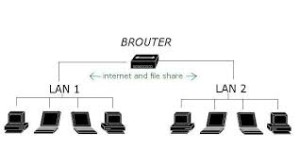
Brouters are rare and their functionality is embedded into the routers functioned to act equally span likewise.
Gateways
Gateway is a device which is used to connect multiple networks and passes packets from one package to the other network. Interim as the 'gateway' between different networking systems or estimator programs, a gateway is a device which forms a link between them. It allows the computer programs, either on the same computer or on unlike computers to share data across the network through protocols. A router is too a gateway, since information technology interprets data from one network protocol to another.
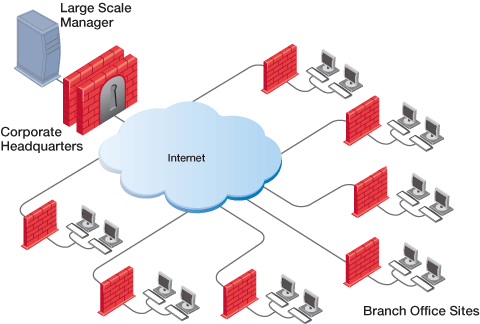
Others such as bridge converts the data into different forms between two networking systems. And so a software application converts the data from one format into some other. Gateway is a feasible tool to interpret the data format, although the information itself remains unchanged. Gateway might exist installed in some other device to add its functionality into another.
Network card
Network cards also known as Network Interface Cards (NICs) are hardware devices that connect a computer with the network. They are installed on the female parent board. They are responsible for developing a physical connection between the network and the computer. Computer information is translated into electrical signals send to the network via Network Interface Cards.
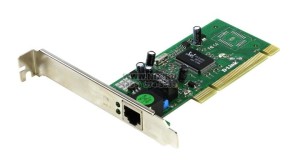
They tin can also manage some important data-conversion function. These days network cards are software configured unlike in olden days when drivers were needed to configure them. Even if the NIC doesn't come upward with the software and so the latest drivers or the associated software can be downloaded from the net too.
Network protocols
Network protocols define a linguistic communication of instructions and conventions for advice between the network devices. It is essential that a networked computer must have one or more protocol drivers. Usually, for two computers to interconnect on a network, they must use identical protocols. At times, a computer is designed to use multiple protocols. Network protocols similar HTTP, TCP/IP offer a footing on which much of the Internet stands.
Arrangement requirement:
- The bus compatibility should be verified on installing an NIC into the organization. The commonly used motorbus organization is Peripheral Component Interconnect (PCI)
- Memory I/O addresses and IRQ are needed.
- Need of drivers if non already installed.
ISDN (Integrated Services Digital Network)
ISDN are used to send over graphic or audio data files. It is a WAN technology that tin be used in place of a punch upwards link. The accessibility of ISDN depends upon the provision of the service by the service provider, the quality of the line prepare to your area. Information technology surely provides higher speed than a modem and has the capability to pick up the line and drop it considerably at a faster rate.
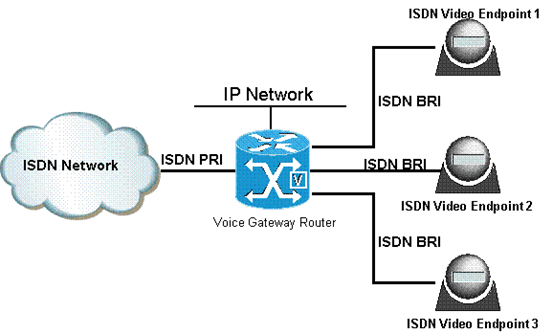
ISDN can create numerous communication routes on a unmarried line. Present, even faster and cheaper technologies that ISDN have found their way in the realm of technology.
Modems
Modem is a device which converts the computer-generated digital signals of a computer into analog signals to enable their travelling via phone lines. The 'modulator-demodulator' or modem tin can exist used as a dial up for LAN or to connect to an ISP. Modems can be both external, as in the device which connects to the USB or the series port of a computer, or proprietary devices for handheld gadgets and other devices, too as internal; in the form of add-in expansion cards for computers and PCMCIA cards for laptops.

Configuration of a modem differs for both the external and internal modem. For internal modems, IRQ – Interrupt request is used to configure the modem along with I/O, which is a retention accost. Typically before the installation of built-in modem, integrated series interfaces are disabled, simultaneously assigning them the COM2 resources.
For external connection of a modem, the modem assigns and uses the resources itself. This is especially useful for the USB port and laptop users equally the non-complex and simpler nature of the procedure renders it far much more beneficial for daily usage.
Upon installation, the 2d step to ensure the proper working of a modem is the installation of drivers. The modem working speed and processing is dependent on ii factors:
- Speed of UART – Universal Asynchronous Receiver or Transmitter chip (installed in the computer to which the modem connection is fabricated)
- Speed of the modem itself
Network Devices Quiz
Quiz 1
Quiz 2
Quiz three
Quiz 4
Quiz 5
Read more:
- What skills yous demand to laissez passer CCNA exam
- The Cisco 3 Layer Hierarchy Model
- Ethernet Cabling
- Ethernet Networking
- Data Encapsulation
- OSI Layer Model
- Network Topology
- Networking Essentials
- Reckoner Networking
Free Cisco CCNA Study Guide
Gratis Practise Tests
- Complimentary MTA Exercise Tests and Exams
- Costless MCSA Windows 7 Exercise Tests and Exams
- Free MCSA Windows 8 Practice Tests and Exams
- Free MCSE and MCSA Windows Server 2012 Practice Tests and Exams
- Free CompTIA A+ Certification Exercise Tests and Exams
- A+ Practice Examination
- Free CompTIA CDIA+ Certification Practice Tests and Exams
- Costless CompTIA Linux+ Certification Practice Tests and Exams
- Costless CompTIA Network+ Certification Practice Tests and Exams
- Costless CompTIA Project+ Certification Practice Tests and Exams
- Free CompTIA Security+ Certification Practice Tests and Exams
- Gratis CompTIA Server+ Certification Practise Tests and Exams
- Free CompTIA Storage+ Certification Practice Tests and Exams
- Free CCENT 100-101 ICND1, CCNA 200-101 ICND2, 200-120 CCNA Practice Exams and Tests
- Free Cisco CCNA certification exercise tests and Exams Questions
- Free CCNA Security Certification Practise Tests and Exams
- Free CCNA Wireless Certification Practice Tests and Exams
- Free CCNA Voice Certification Exercise Tests and Exams
- Complimentary CCNP practice tests and Exams Questions
- Free CCIE Collaboration Certification Practise Tests and Exams
- Complimentary CCIE Routing and Switching Certification Practice Tests and Exams
- Free CCIE Security Certification Exercise Tests and Exams
- Free CCIE Wireless 350-050 Practice Exam
Router Admin Access IP Addresses
- 192.168.8.1
- 192.168.100.1
- 192.168.254.254
- 192.168.l.ii
- 192.168.15.1
- 192.168.0.254
- 192.168.10.1
- 192.168.0.2
- 192.168.ane.4
- 192.168.3.1
- 198.162.1.1
- 192.168.xi.1
Source: https://www.certiology.com/computing/computer-networking/network-devices.html
Posted by: corleywittentiou.blogspot.com


0 Response to "What Can A Laptop Do Without A Service Provider"
Post a Comment